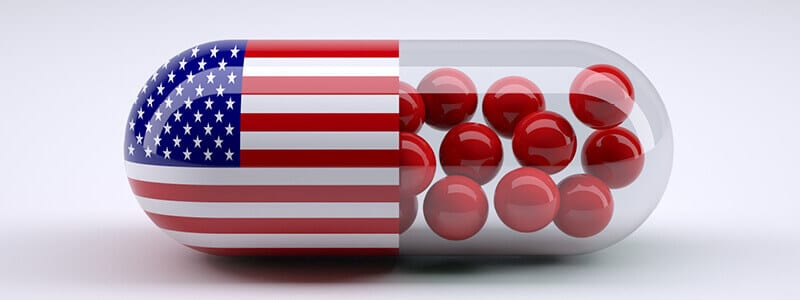
Back in 2008, our team members carried out their biggest distribution of giveaway items at a pharmaceutical event; 75,000 promotional goods including USB sticks, speakers, pens and games – enough for six free gifts per delegate.
Today it’s impossible to get away with such largesse. After the 2008 PhRMA regulations came into effect, giveaways of this type were outlawed to curb falling standards within US pharma. Today, even branded coffee cups are no longer allowed at congresses and symposia.
But all that might be about to change.
Along with Wall Street, the coal industry and construction, President Trump has promised a bonfire of “75% to 80% of FDA Regulations” – the Food and Drug Administration measures which includes those around pharmaceutical events.
What does this mean for US pharma brands and those in US markets – and is deregulation a good thing?
The wild west
By the time PhRMA regulations came into force in late 2008, Big Pharma had become the wild west of marketing. Three years earlier, promotional spend by American brands topped $29.9 million, 56% of which went to free samples, 25% on direct marketing to physicians and 12.5% on patient advertising. Ex-pharma salesman, Jamie Reidy covered the worst excesses in the industry in Hard Sell: his sensational account of Pfizer’s marketing campaigns for Viagra.
Today, Trump stands ready to sweep away the 2008 FDA measures imposed to limit such abuses. On the campaign trail, the President-elect promised to bulk-buy medicines to lower prices for individual patients.
Following a testy meeting with American pharma chiefs, Trump – now President – switched his position, promising to lower drug prices, shorten the drug approval process and relocate pharma manufacturing to the US. His administration would, he said, cut “regulations at a level no one has ever seen before.” Given the sweeping scale of Trump’s measures on immigration and taxation, we can safely assume this deregulation will apply to pharmaceutical promotions – the US being the biggest market for medicines internationally.
A bitter pill?
At first glance, deregulation of pharma marketing appears to be a boon for the pharma sector.
Fewer limitations means more scope for creative marketing, which means bigger budgets, which means greater sales. Indeed, medical stocks jumped following Trump’s January meeting with pharma bosses at Merck, Johnson & Johnson, Lilly and Amgen.
The reality is more complicated, however, and pharma-marketing may get more difficult as a result of Trump’s sweeping measures – if they ever make it through the various Houses that control US politics.
PhRMA’s 2008 regulation of pharmaceutical promotion was intended to protect patients following decades of unchecked marketing promotion. In turn, medical businesses have been forced to think laterally and more creatively in their marketing – in many cases ‘putting the patient first’ to a greater degree than previously.
Such a shift is a positive one. Today, large pharmaceutical companies rely on the FDA to benchmark industry standards within medicine. Any measure which makes it easier for smaller, younger pharma firms to compete on equal terms with established ones is likely to be opposed by those bigger businesses.
Deregulation is likely to allow less scrupulous firms to promote and sell large volumes of medicines which have not passed the rigorous testing required in the Obama era (which itself saw approval times drop via the 21st Century Care Act). At best, poorly performing medicines could find their way to market, as happened with Sarepta Therapeutics. At worse, illnesses caused by ‘junk science’ treatments could increase.
And a return to the wild west days of old could mean any subsequent re-regulation of the US pharma industry would be even heavier than exists today. The dwindling US tobacco industry proves just how crippling re-regulation can be – the number of US tobacco farms having declined from 180,000 to 10,000 since 1980. Outlawing tobacco branding has had a similar effect in the UK.
For US pharmaceutical marketers, deregulation offers a rich temptation to revert back to old excesses. But the cost of doing so may be the very growth of their industry. Will they bite?
Subscribe and stay up to date
receive essential emails.


